This post may contain affiliate links. Please read our disclosure policy.
Served over steamed rice, this chicken bulgogi recipe is a true homage to Korean flavors and Asian ingredients. Every bite of this sweet and savory BBQ chicken is smothered in sauce, making it deliciously juicy and tender.
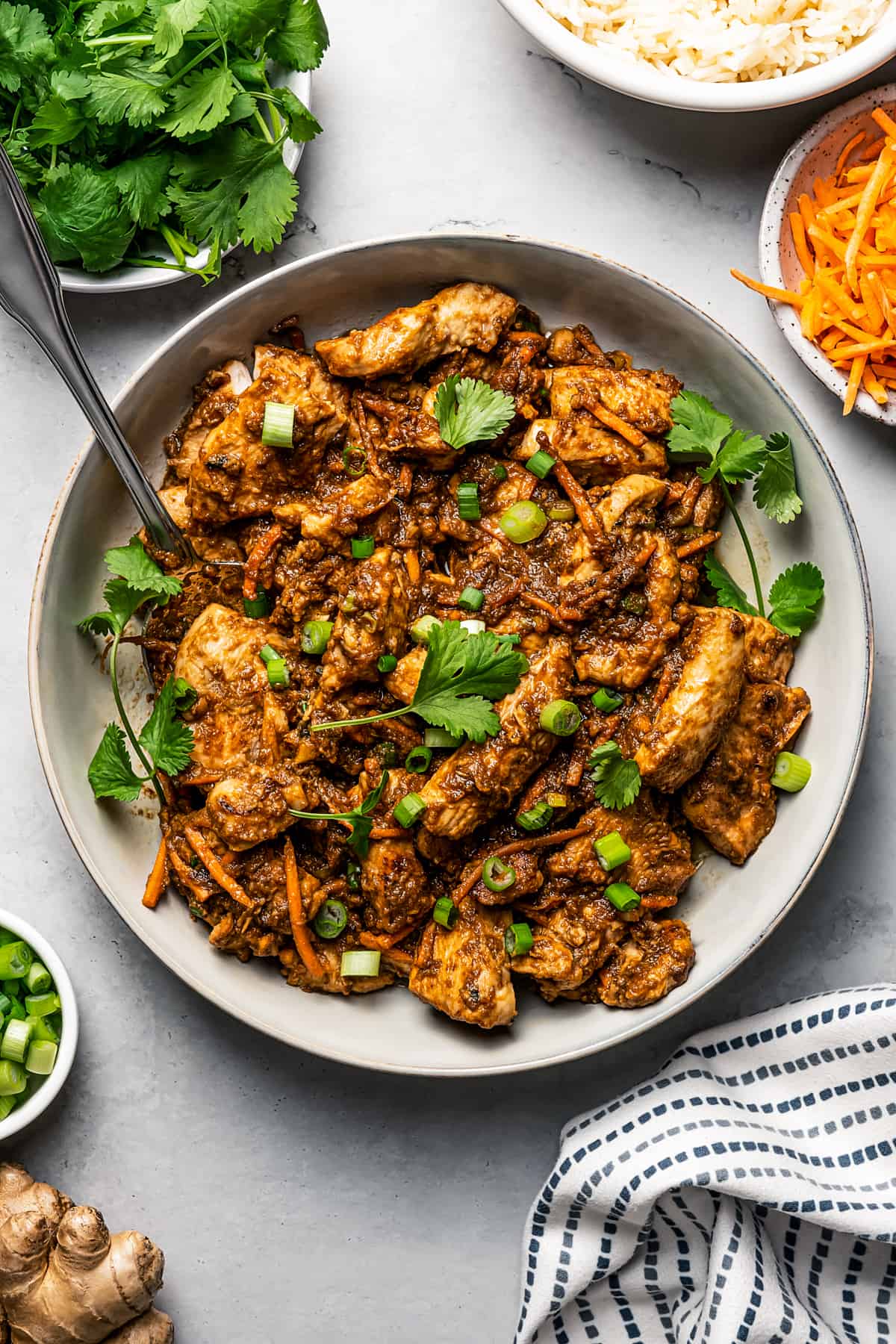
Korean Chicken BBQ
Coated in a smokey, caramelized sauce, this dak bulgogi is what all barbecue chicken dishes dream of. Super tender on the inside and lightly charred on the outside, it’s the perfect juicy bite.
Made with a pureed pear sauce packed with Asian ingredients like sesame oil and soy sauce, this Korean chicken bulgogi is a true masterpiece from start to finish. Thankfully, that’s got nothing to do with the recipe’s complexity, which is extremely easy!
The flavor takes care of itself as long as you’ve got some time to blend and marinate the chicken. Next time you’re thinking of a cookout, forget the grill. Invite everyone over for this much easier, much better, authentic Korean chicken BBQ.
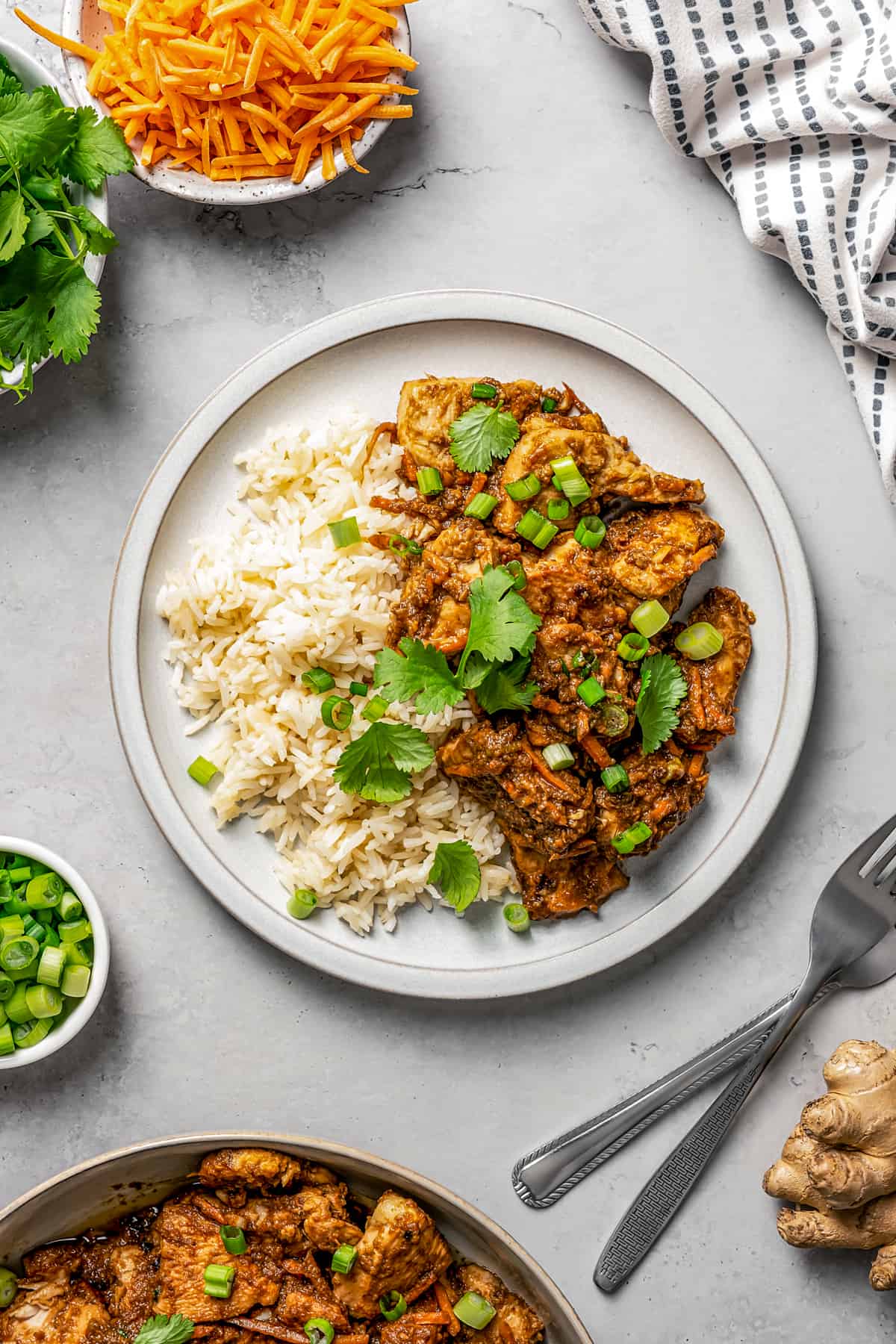
What is Bulgogi?
Bulgogi, or dak bulgogi, is a type of Korean BBQ dish. It’s made with thinly sliced beef, pork, or chicken cooked over a grill or on a griddle. The sauce combines blended fruits, veggies, and Asian condiments like soy sauce and sesame oil. There’s also a bit of sugar or rice syrup for sweetness to balance things out. While bulgogi meat is usually marinated for the best flavor, it doesn’t have to be.
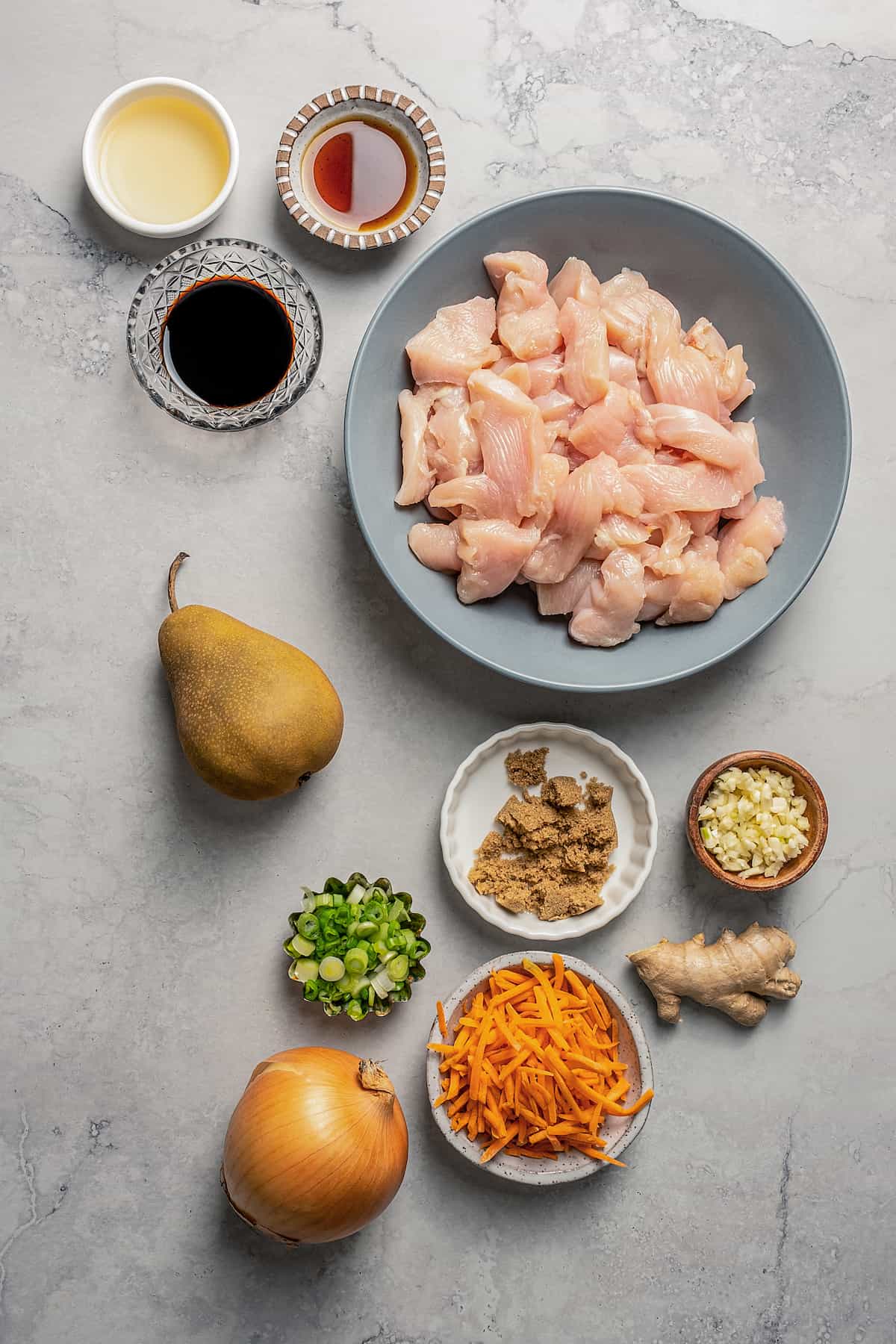
Recipe Ingredients
Making dak bulgogi is all about finding the perfect balance between sweet and savory. Check the recipe card at the bottom of the post for full ingredient amounts.
- Boneless skinless chicken breasts – Feel free to use chicken thighs.
- D’Anjou pear – Bosc pears or Red Delicious apples work too.
- White onion – Yellow onion is a good substitute.
- Green onions
- Fresh ginger – Don’t use ground ginger.
- Garlic cloves – Feel free to substitute them for about 3 teaspoons of garlic powder.
- Rice wine vinegar
- Toasted sesame oil
- Dark brown sugar – Don’t use granulated white sugar for this. Rice syrup is a good alternative.
- Soy sauce – I used regular soy sauce, but low-sodium works too.
- Carrot
- Vegetable oil
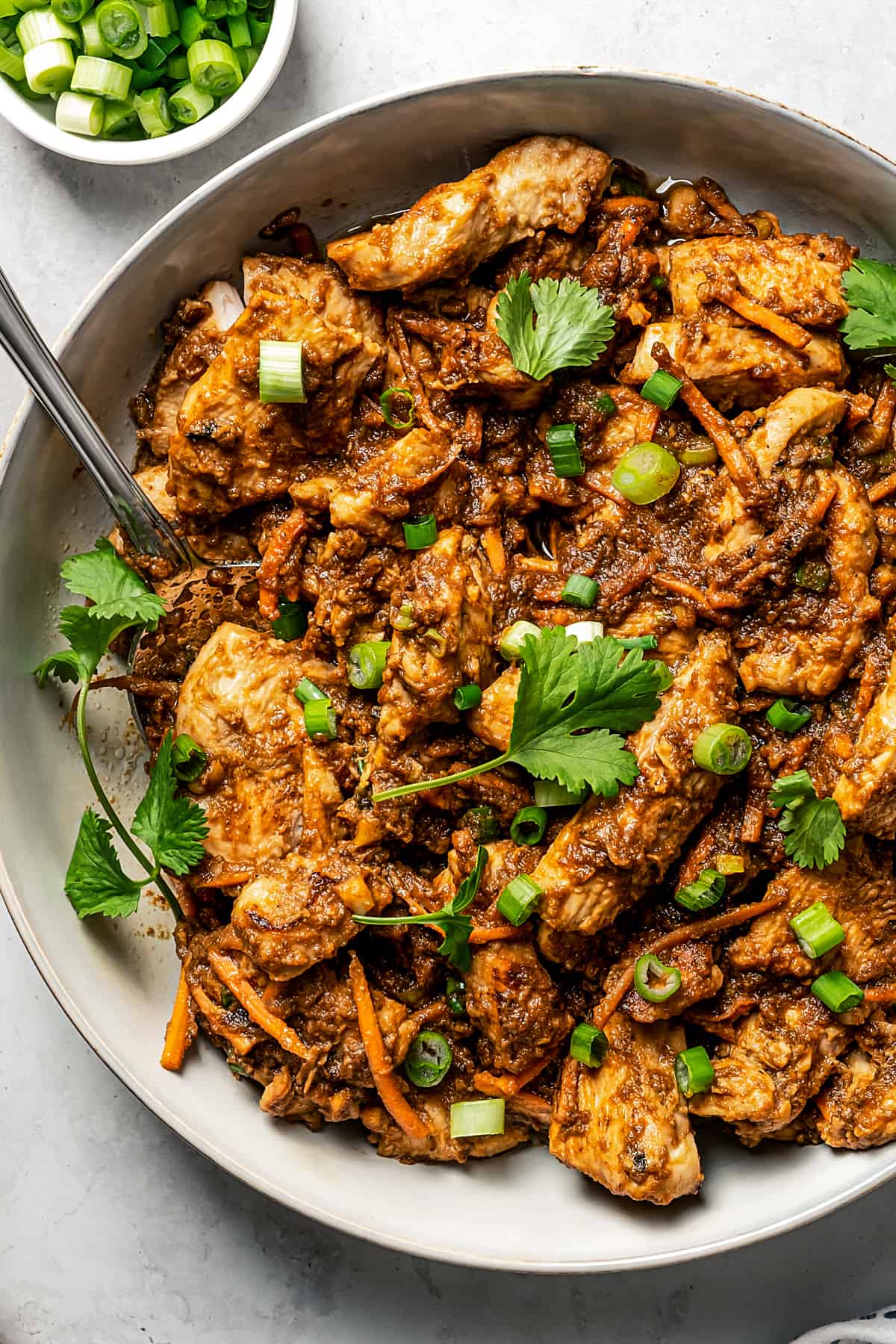
Easy Variations
- Veggies, beef, and gochujang are great twists on this traditional recipe.
- Add veggies. Toss leftover veggies into the pan with 1/2 tablespoon vegetable oil before adding the chicken. Cook them to taste and then set them aside. Cook the bulgogi as usual and add them in at the end for a bulgogi-veggie stir-fry.
- Use beef. Substitute the chicken for thinly sliced beef. It’ll make a yummy and traditional variation of Korean bulgogi. Grab my 👉 Beef Bulgogi 👈 recipe.
- Make it spicy. Add 1/2-1 tablespoon of Korean gochujang paste to the marinade for a bit of heat.
How to Make Chicken Bulgogi
You only need to marinate the chicken and cook it. It’s easy!
- Marinate it. Place the chicken in a large mixing bowl. Add the pureed pear, pureed onion, green onions, ginger, garlic, rice wine vinegar, sesame oil, brown sugar, and soy sauce. Stir well to combine. Fold in the carrots and mix. Cover the bowl with plastic wrap and refrigerate it for at least 2 hours.
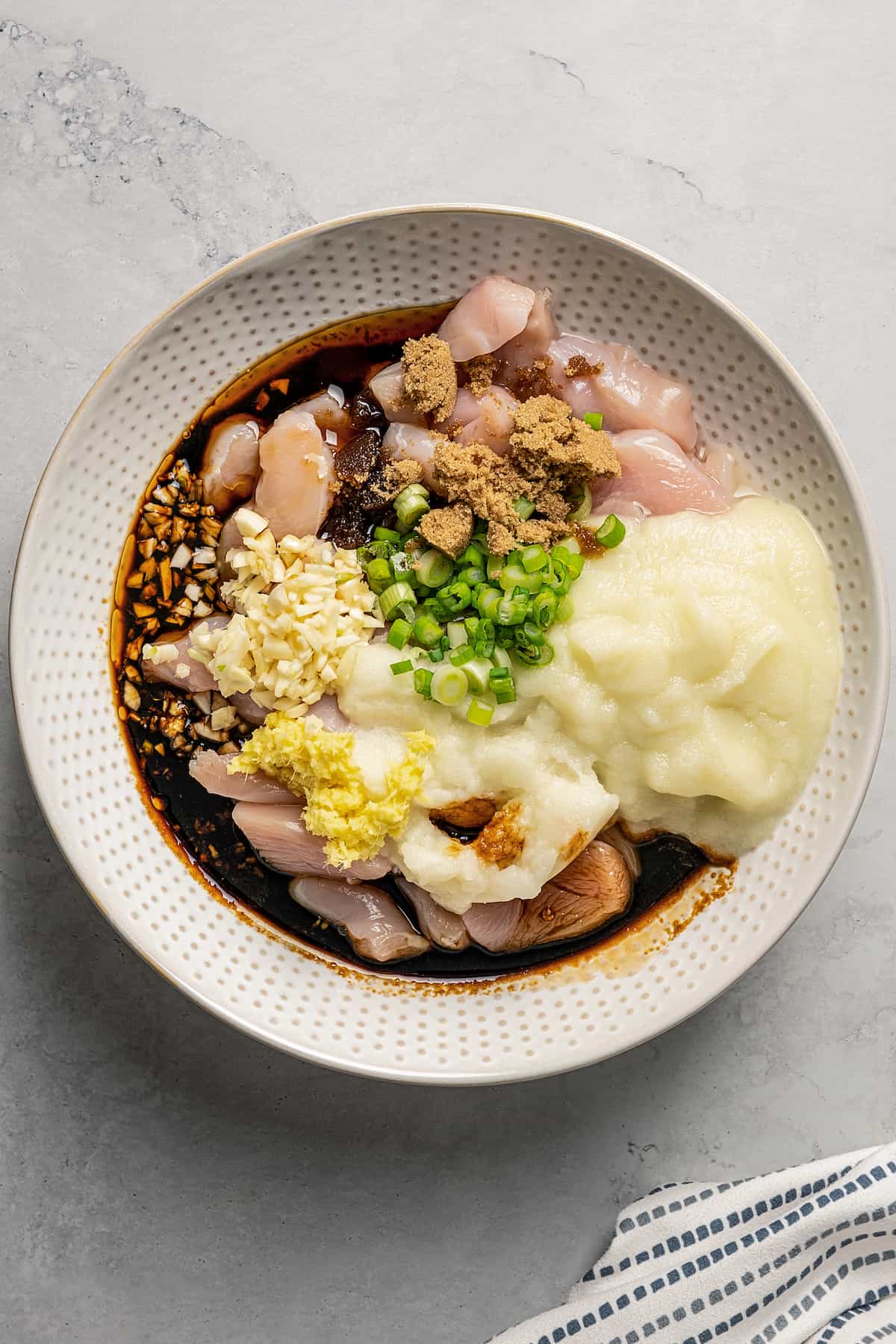

- Cook it. Add 2 tablespoons of vegetable oil to a large pan or griddle over medium-high heat. Add chicken without the marinade. Let it cook for a few minutes on each side or until the sauce begins to caramelize on the chicken.
- Add the sauce. Once all the chicken has been cooked, add in the leftover marinade. Let the sauce reduce for 3-4 minutes while the carrots cook. Remove them from the heat.
- Serve. Serve the chicken bulgogi and cooked carrots with your favorite sides. Enjoy!

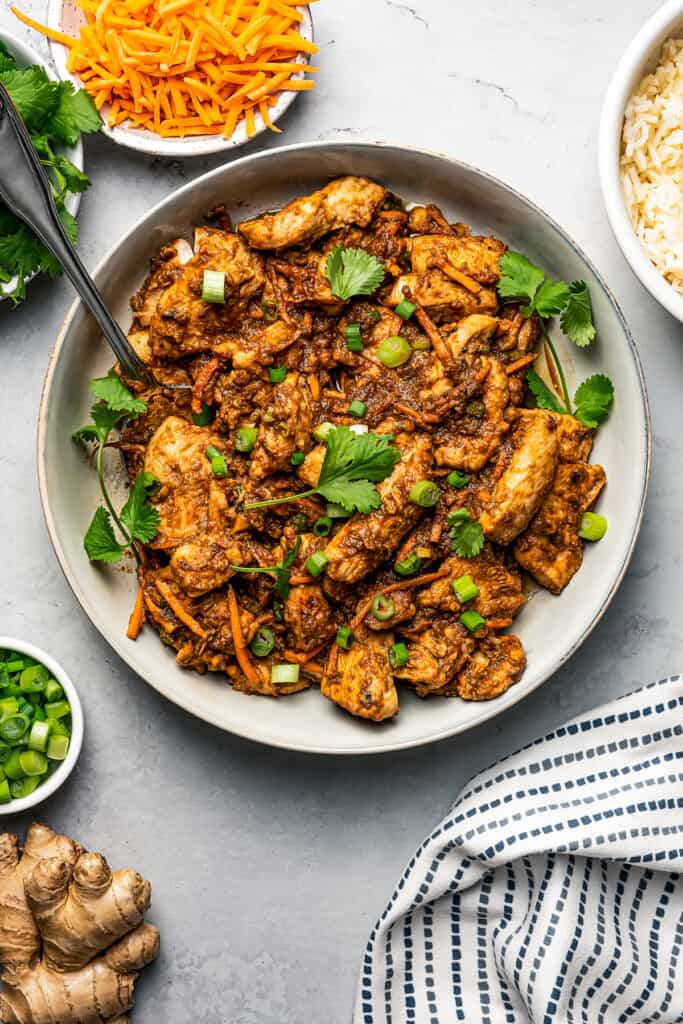
Tips for Success
Follow these tips for an amazing dak bulgogi (and one that reduces waste too):
- Let it rest. Leave the chicken to marinate overnight for the flavors to intensify and really soak into the meat.
- Use leftover fruits. Blending sad-looking leftover apples and pears that no one’s going to eat is a great way to reduce waste while adding sweetness to this dish.
- Save the marinade. Reserve any leftover unused marinade and refrigerate it. Use it to flavor your Asian noodle and veggie stir-fries.
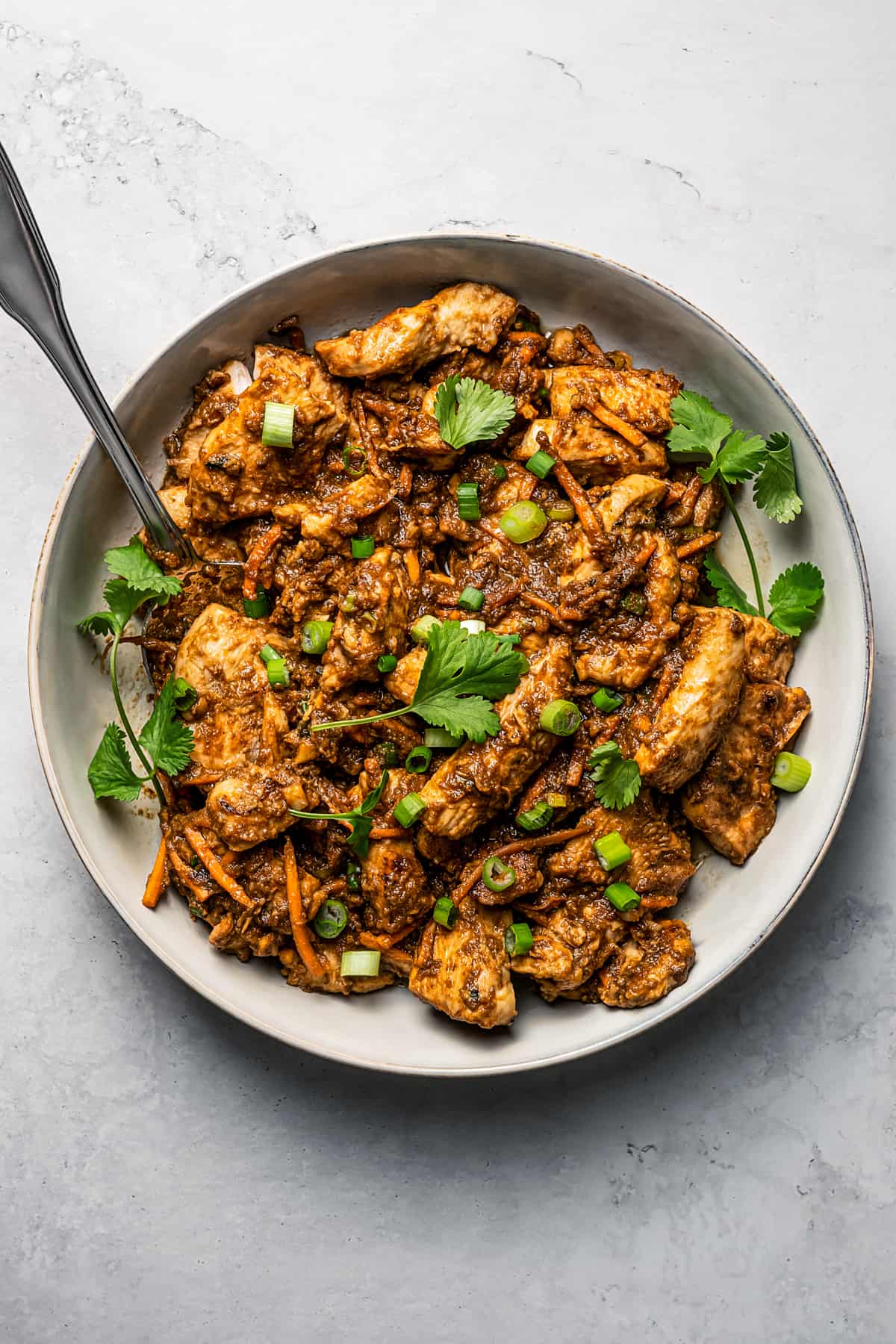
What to Serve With Korean Chicken Bulgogi
I love this dak bulgogi over steamed rice like my Instant Pot Jasmine Rice. However, it’s also great with fried rice like my Chicken Fried Rice or Shrimp Fried Rice.
You can also use the bulgogi to make lettuce wraps. Add a bit of steamed rice and hot sauce, and dig in! For more dish inspiration, pair it with my Asian Chicken Noodle Soup and Spicy Asian Cucumber Salad.
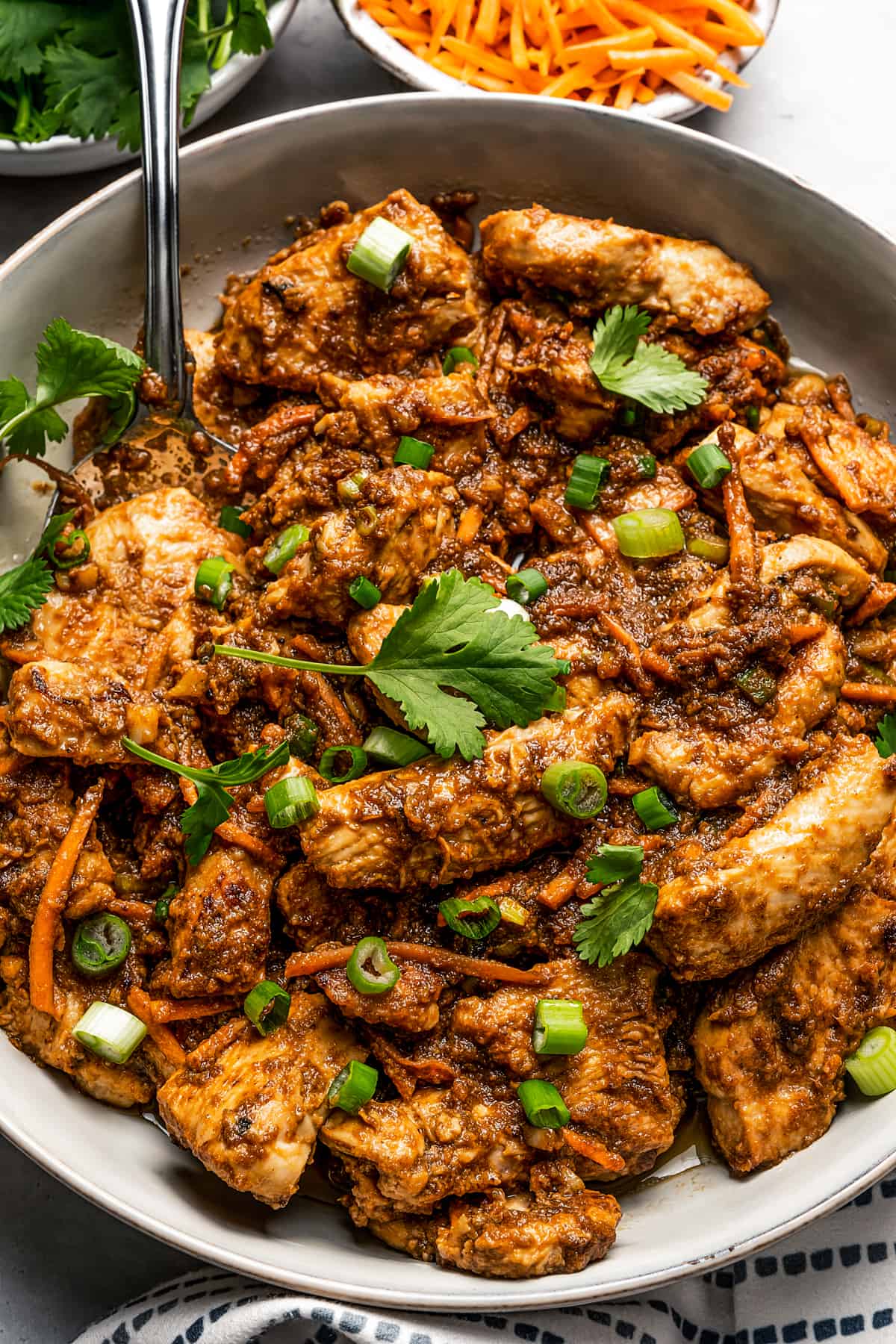
How to Store & Reheat Leftovers
- Once fully cooled, refrigerate any dak bulgogi leftovers in an airtight container for up to 3 days.
- To reheat it, place it in the microwave for up to a minute or until warm. You can also heat it in a pan over medium-low heat for 5 to 7 minutes.
More Chicken Recipes
- Chicken Rice and Vegetable Skillet
- Cranberry Chicken Salad with Light Dijon Parmesan Dressing
- Italian Chicken and Vegetables In Foil
- Creamy Chicken and Cauliflower
- Piri Piri Chicken (Nando’s Chicken)
ENJOY!
Pin this now to find it later
Pin It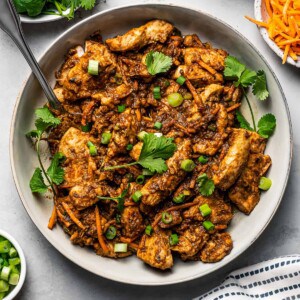
Chicken Bulgogi
Ingredients
- 1 small fresh pear,, sliced, use D'Anjou pears if possible
- 1 small white onion,, sliced
- 1 pound boneless, skinless chicken breasts,, thinly sliced or cubed into 1 inch pieces
- 2 green onions,, thinly sliced, white and green parts
- ¼ cup soy sauce
- 1½ tablespoons toasted sesame oil
- 1 tablespoon dark brown sugar
- ½ tablespoon rice wine vinegar
- 2 teaspoons finely chopped fresh ginger
- 4 cloves garlic,, finely chopped
- 1 medium carrot,, peeled and cut into matchsticks
- vegetable oil, for cooking
Instructions
- Add the pear and onion slices to a blender; process until pureed. If it's dry, add a tablespoon or two of water.
- Place the chicken in a large mixing bowl. Add the pureed mixture, green onions, soy sauce, sesame oil, dark brown sugar, rice wine vinegar, ginger, and garlic to the chicken. Stir well to combine. Fold in the carrots and mix everything together.
- Cover the bowl with plastic wrap and refrigerate it for at least 2 hours.
- Add 2 tablespoons of vegetable oil to a large pan or wok set over medium-high heat. To the heated oil, add half of the chicken pieces without the marinade, and cook for 2 to 3 minutes per side. Remove the cooked chicken from the pan and repeat with the rest of the chicken, adding more oil as needed.
- Once all the chicken has been cooked, return all the chicken pieces to the pan and add the leftover marinade. Continue to cook and let the sauce reduce for 3 to 4 minutes.
- Remove from heat and serve the chicken bulgogi with your favorite sides.
Equipment
Notes
- Chicken: I used boneless, skinless chicken breasts to make this dak bulgogi, but feel free to use boneless, skinless chicken thighs. You can also substitute the chicken for thinly sliced beef.
- Pears: The secret ingredient in bulgogi is pears. They add sweetness and a melty texture to the marinade. So, please don’t skip it. D’anjou and bosc pears are both excellent choices.
- Marinade: Keep the chicken in the marinade for 2 hours and up to 24 hours.
- Make it spicy. Add a tablespoon of Korean gochujang paste to the marinade for some heat.
Nutrition
Nutritional info is an estimate and provided as courtesy. Values may vary according to the ingredients and tools used. Please use your preferred nutritional calculator for more detailed info.









Hi Katerina,
I’m new to your site and just made Chicken Bulgogi. It was AMAZINGLY delicious. Everyone in the family loved it. I see what you mean about it having a melty texture. Also, I’m always paranoid about raw chicken so I cooked the heck out of it but it was still moist and juicy. I think the marinade is what kept it moist. Thanks for the great recipe.
Hi! I am sort of a good cook (for about 35 years so far) but I have a question about this recipe. The recipe says in two places, to cook the chicken WITHOUT the marinade, yet the recipe specifies adding all the prepared marinade ingredients to the chicken before cooking. I’d really like to try this recipe as it sounds wonderful. Can you please clarify my dilemma of cooking the chicken first without the marinade, or cooking the whole thing together at once in the wok? Thank you! I so enjoy your recipes. Joan Hornick
Hi!
You want to fish out the chicken pieces first, brown them a bit, and then add the (rest of the) marinade. I realize that the chicken pieces would have some of that marinade on them, which is why I said, “the rest of the marinade.” Does that make sense? I apologize for the confusion. ☺️
Hi Katerina!
Thank you for your quick reply! Yes it all makes sense now. I usually have all of the recipe ingredients on hand anyway, and I really want to try this recipe. With your clarification, now I can! Thank you so much.
Joan
Do you peel the Pear first or leave the peel on
No, but if you want to, you certainly can. I recommend peeling it if it’s a pear with thicker skin.